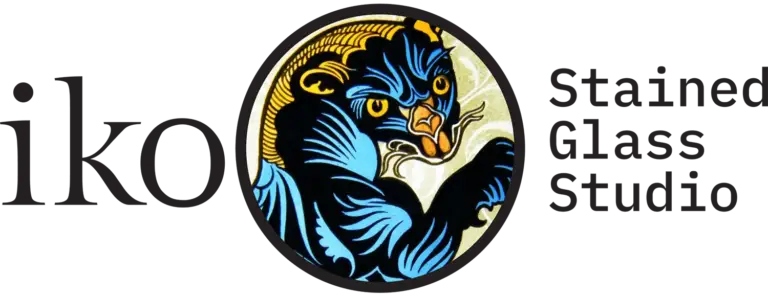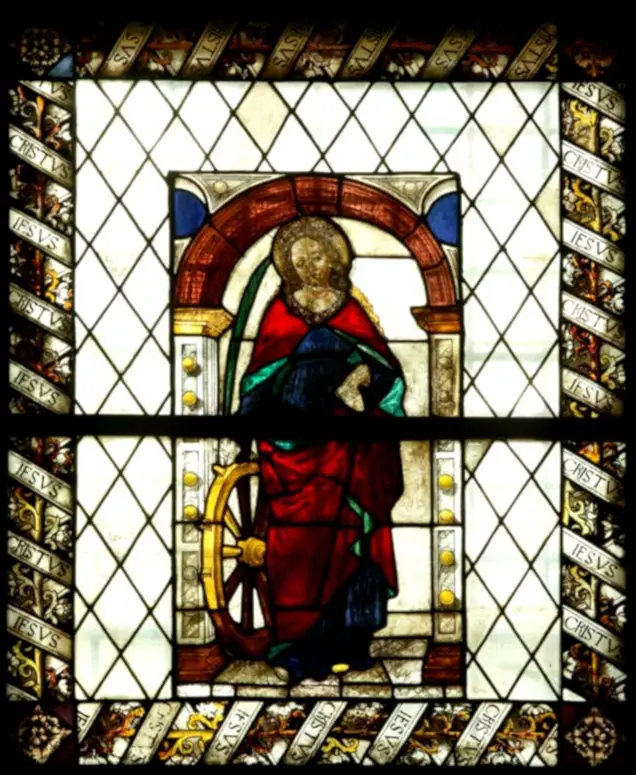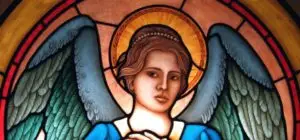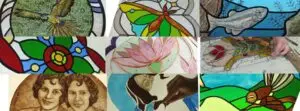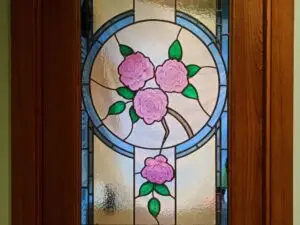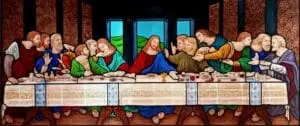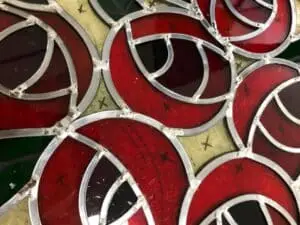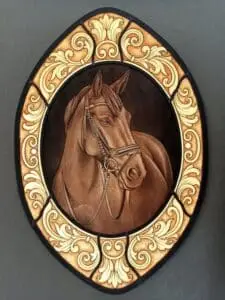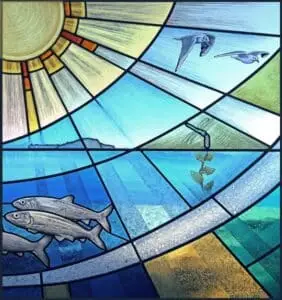Stained Glass from the Certosa di Pavia
I decided to dedicate a post to the stained glass from the Certosa di Pavia after a recent visit that deeply moved me. Being originally from Pavia, I have had many opportunities to visit this magnificent place, from primary school trips to visits with friends and relatives. However, it had been years since my last visit. Seeing the Certosa again today, with the experience I’ve gained in the field of stained glass art, was truly emotional.
For those who may not know, the Certosa di Pavia is a splendid monumental complex located north of the city. Its construction began in 1396 at the behest of Gian Galeazzo Visconti, Duke of Milan. The site includes a monastery and a sanctuary, now home to a community of Cistercian monks. The complex is a masterpiece blending elements of late Italian Gothic and Renaissance styles, enriched with sculptures, mosaics, and frescoes of extraordinary beauty.
Among the many wonders of the Certosa, the collection of Renaissance stained glass windows stands out as true treasures, telling stories of faith, artistry, and exceptional craftsmanship.
I hope this post inspires you to visit the Certosa di Pavia and be captivated by these incredible works of art.
The Stained Glass from the Certosa di Pavia: the artists
Many Renaissance artists contributed to the creation of the magnificent monumental complex of the Certosa di Pavia, and among these stand out masters of glass art such as Cristoforo de Mottis, Antonio da Pandino and Vincenzo Foppa.
The Stained Glass Window of Saint Bernard
One of the earliest works attributed with certainty is the stained glass window depicting Saint Bernard, as evidenced by the inscription at its base: “opus Cristofori de Mottis 1477”. Cristoforo de Mottis (active between 1460 and 1482) was the most prominent member of the De Mottis family, which also included Iacopino, credited with another stained glass window in the Certosa. In addition to their work at the Certosa di Pavia, the De Mottis family made their mark on the stained glass windows of the cathedrals of Milan and Genoa.
This window, painted with grisaille and silver stain, depicts the founder of the Carthusian Order with a chained demon at his feet, symbolising the exorcist role traditionally attributed to him. The Visconti-Sforza coat of arms on one of the columns identifies the patronage, attributed to Duke Galeazzo Maria Sforza (who died in 1476).
The Stained Glass Window of Saint Jerome
Attributed to Iacopino de Mottis and dated around 1505, this stained glass window depicts Saint Jerome with his traditional attributes: a book in his hands and a lion at his feet. The figure is adorned in a splendid red robe made of blown glass, enriched with damask patterns painted in grisaille. The saint is framed within an architectural setting, closed at the back by a drapery decorated with floral motifs.
The Works of Vincenzo Foppa
The renowned painter Vincenzo Foppa, a leading figure of the Lombard Renaissance, is another artist to whom several stained glass windows in the Certosa are attributed.
- The Nativity Window (1476): Likely based on sketches by Foppa, this window was crafted by master glassmakers from Milan. Unfortunately, it suffers from the phenomenon of grisaille loss, caused by factors such as inadequate firing, poor-quality materials, or unfavourable environmental conditions.
- The Virgin of the Annunciation Window: The Virgin is depicted reading a book, with another volume resting on a balustrade. The work features the coat of arms of the Sforza-Visconti family, underscoring the importance of their patronage. Although there is no evidence of a complementary window depicting the angel, the composition appears complete in its current form.

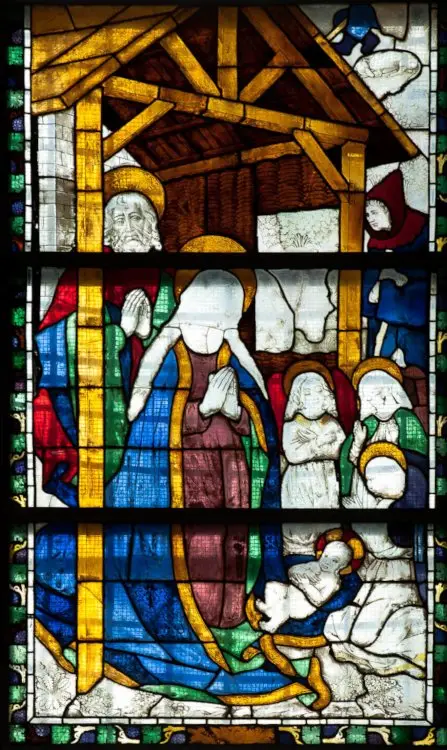
- The Saint Catherine of Alexandria Window: Likely designed and overseen by Foppa, this window portrays the saint with her traditional symbols: the wheel and the palm of martyrdom. The decorative glass frame, however, dates back to the 19th century and is the work of Milanese glassmaker Pompeo Bertini.
The Stained Glass Window of Saint Michael
Dated around 1475, this window was created by Antonio da Pandino, a Cistercian monk and master artist. The inscription “Antonius de Pandino me fecit” confirms the attribution. Archangel Michael is depicted in armour, serene and dignified, defeating Satan, who is portrayed as a winged, horned demon at his feet. The scales in Michael’s hand symbolise the weighing of souls. The window features a sophisticated colour palette: shimmering white for the figures and architecture, deep blue for the background, and bright yellow for architectural and armour details.
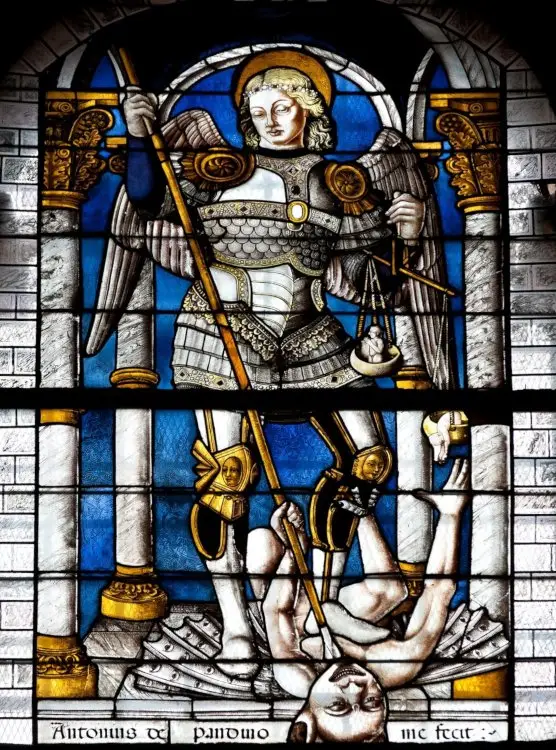
The Stained Glass Window of Saints Gervasius and Protasius
This window depicts the twin martyr saints of Milanese origin. Although the author is unknown, parts of the composition date back to the 19th century. Some historians suggest a connection to a similar work that was destroyed in the Cathedral of Milan during a fire in 1906, attributed to Agostino de Mottis, the son of Cristoforo and brother of Iacopino.
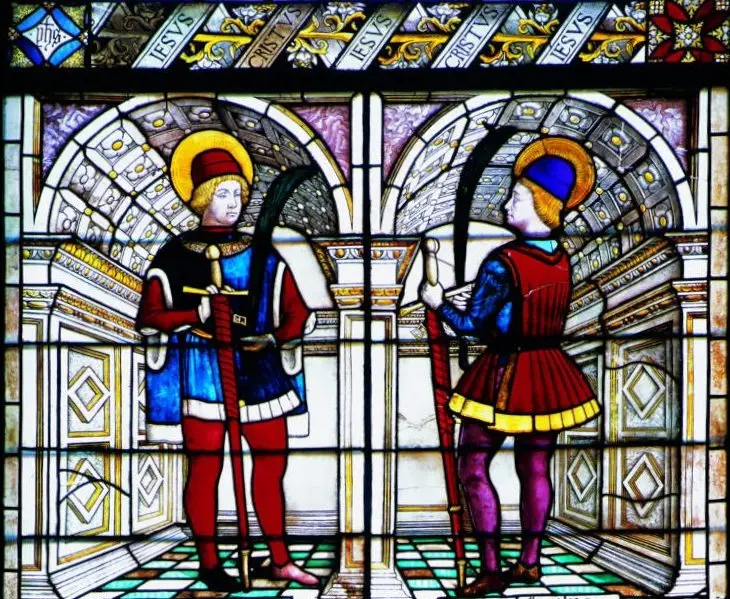
The stained glass windows from the Certosa di Pavia are a remarkable example of Renaissance glass art. If you are passionate about art history, we invite you to visit our page dedicated to the history of stained glass.
